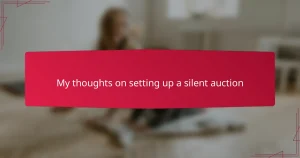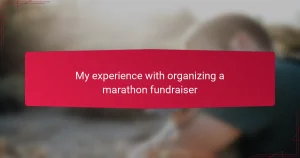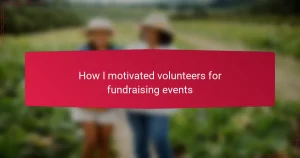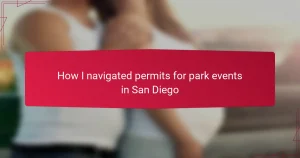Key takeaways
- Local media thrives on genuine connections and personal stories, making it effective for promoting community fundraisers.
- Building relationships with journalists leads to better coverage and engagement compared to generic outreach methods.
- Cost-effective local media options can significantly boost visibility and donations without a large budget.
- Clear, authentic messaging tailored to specific outlets is crucial for grabbing the attention of busy journalists.
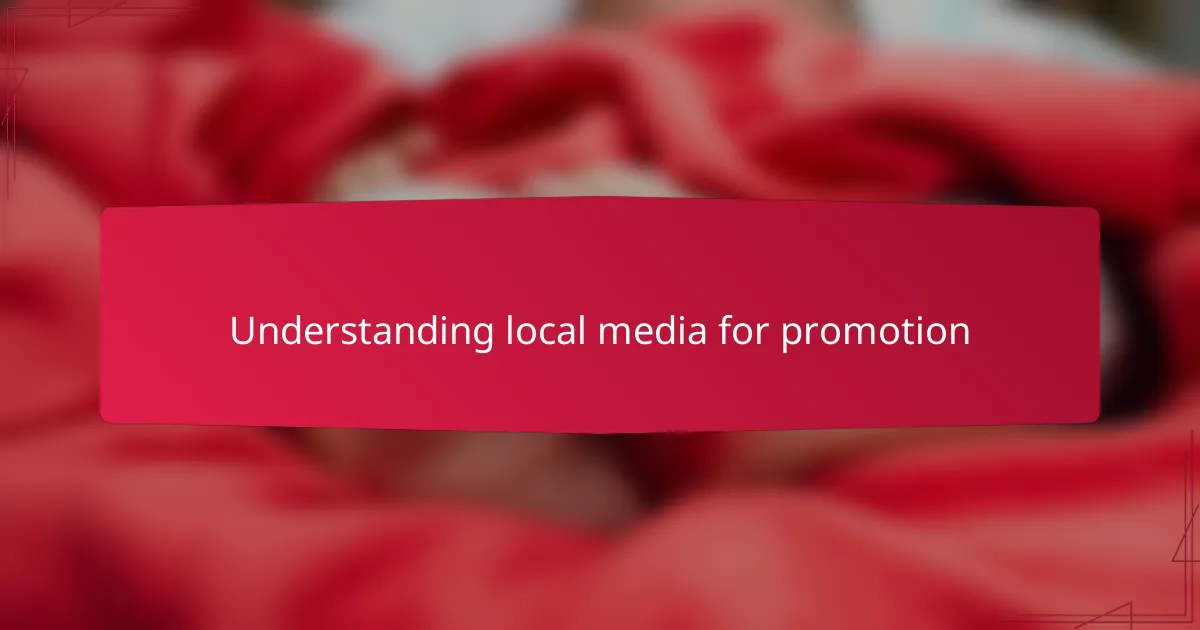
Understanding local media for promotion
When I first started promoting family fundraisers in San Diego, I realized that local media isn’t just about newspapers and TV; it’s a vibrant mix of community newsletters, local blogs, and radio stations that really connect with your audience. Have you ever wondered why a well-placed story in a small community paper sometimes drives more attendance than a big ad? From my experience, local media thrives on personal stories and genuine connections, making it a powerful tool for event promotion.
Understanding who runs these outlets and what stories resonate with them changed how I approached my outreach. Instead of sending generic press releases, I shared heartfelt stories from families involved in the fundraiser. This made the media outlets see the event not just as news but as a community cause worth supporting. It’s amazing how a simple shift in perspective can open doors that seemed firmly closed.
I also learned that timing and relationships matter deeply in local media. Reaching out too early or too late can mean your event gets overlooked, and cold calls rarely work. Building relationships over time by engaging with local journalists and editors helped me gain trust and, ultimately, better coverage. Have you experienced the frustration of hearing “send us an email” and never getting a response? I certainly have, but patience and persistence proved invaluable.
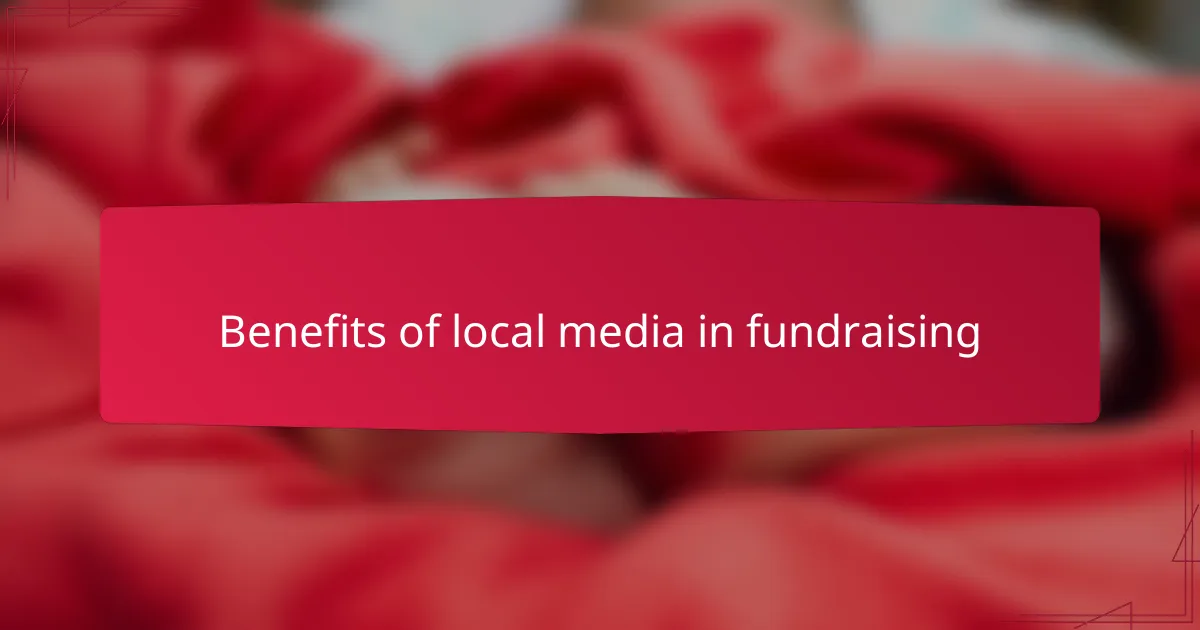
Benefits of local media in fundraising
One of the biggest benefits I found using local media for fundraising is the trust built within the community. People tend to pay more attention when they see familiar faces and hear stories from their own neighborhood. Have you noticed how a local radio segment about a family fundraiser can spark real conversations around the dinner table? That kind of connection makes donors more willing to contribute because it feels personal and authentic.
Another advantage is the cost-effectiveness. Unlike pricey ads, local media outlets often welcome stories about community events without charging a fortune. I remember when a small feature in a community newsletter led to a surprising surge in donations, all without stretching our limited budget. It’s proof that smart storytelling can sometimes outweigh expensive marketing.
Lastly, local media offers ongoing support beyond just one event. Journalists and bloggers appreciate follow-ups and updates, which means your fundraiser stays visible longer and builds momentum over time. I found that maintaining those relationships helped keep the cause alive in people’s minds, turning a one-time event into lasting community engagement. Doesn’t that kind of sustained interest sound like a game-changer for any fundraiser?
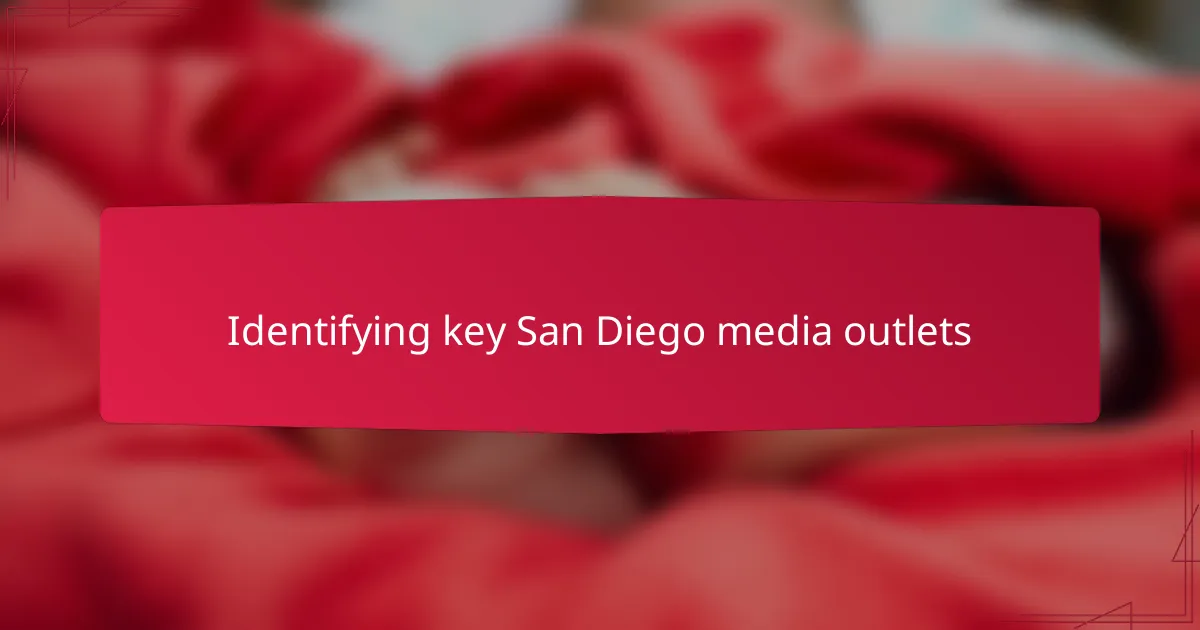
Identifying key San Diego media outlets
One of the first things I did was to map out which San Diego media outlets truly mattered for family fundraisers. I focused on sources that felt close-knit—like community newsletters and local radio shows—because these often carried stories that people actually cared about. Have you ever noticed how a tiny mention in a beloved neighborhood paper can create more buzz than a flashy citywide ad? That’s exactly what I experienced.
Next, I took time to understand each outlet’s unique audience and style. Some favored heartfelt stories, while others leaned toward quick, informative blurbs. Knowing this helped me tailor my pitches to fit what editors were hungry for. It felt like cracking a hidden code—once you speak their language, your story suddenly becomes more than just another event notice.
I also made a point to identify the people behind the news—the editors, reporters, and even bloggers who shape what gets shared. Building rapport with them wasn’t immediate, but when I followed up with genuine interest instead of generic emails, doors started opening. Isn’t it amazing how media stops feeling like a faceless machine when you connect with the humans running it? That change transformed how my events got featured, making every mention count.
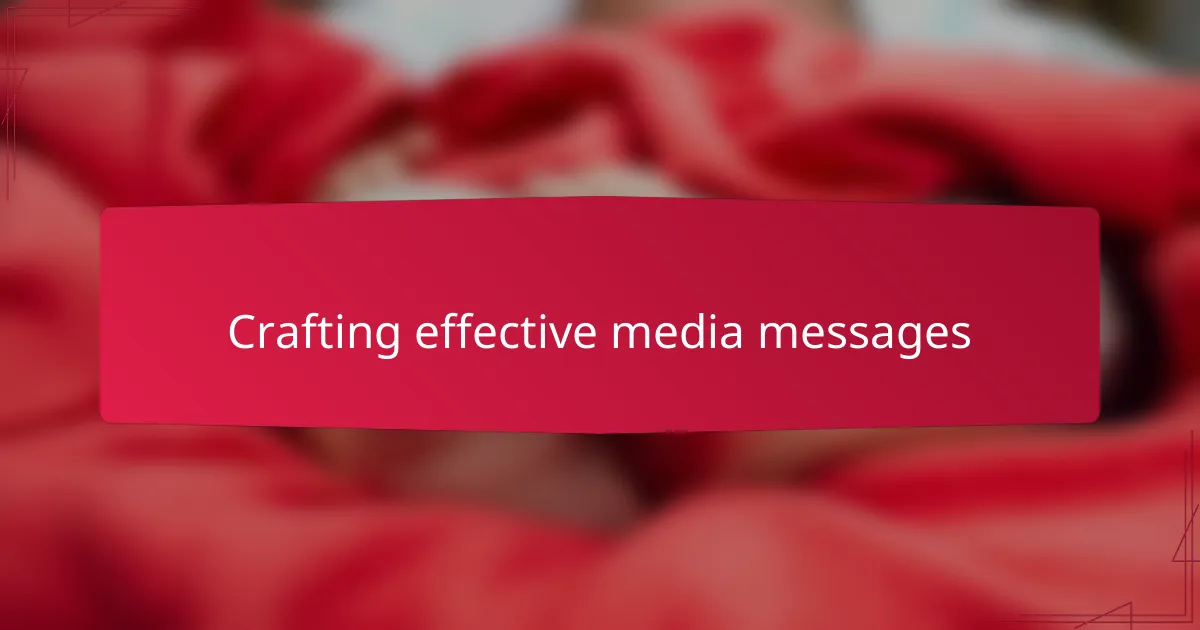
Crafting effective media messages
Crafting media messages that truly resonate starts with knowing your audience—and I found that local media outlets crave authenticity more than flashy sales pitches. Have you ever noticed how a simple, heartfelt story can grab attention better than a list of facts? Sharing genuine family moments from past fundraisers made my messages memorable and relatable, which editors really appreciated.
One tip I learned the hard way was to keep messages clear and concise. Busy journalists don’t have time to sift through long emails, so I made sure every sentence counted. How often have you skimmed a message only to lose the point halfway? Avoiding jargon and focusing on what makes the event unique helped me cut through the noise and get noticed.
Timing also affected how I crafted my messages. I aimed to send them when the news cycle was less crowded, giving my story the space it deserved. Sometimes that meant waiting patiently or following up gently, rather than bombarding editors all at once. That patience paid off, turning my once-overlooked pitches into solid media coverage that boosted event turnout.
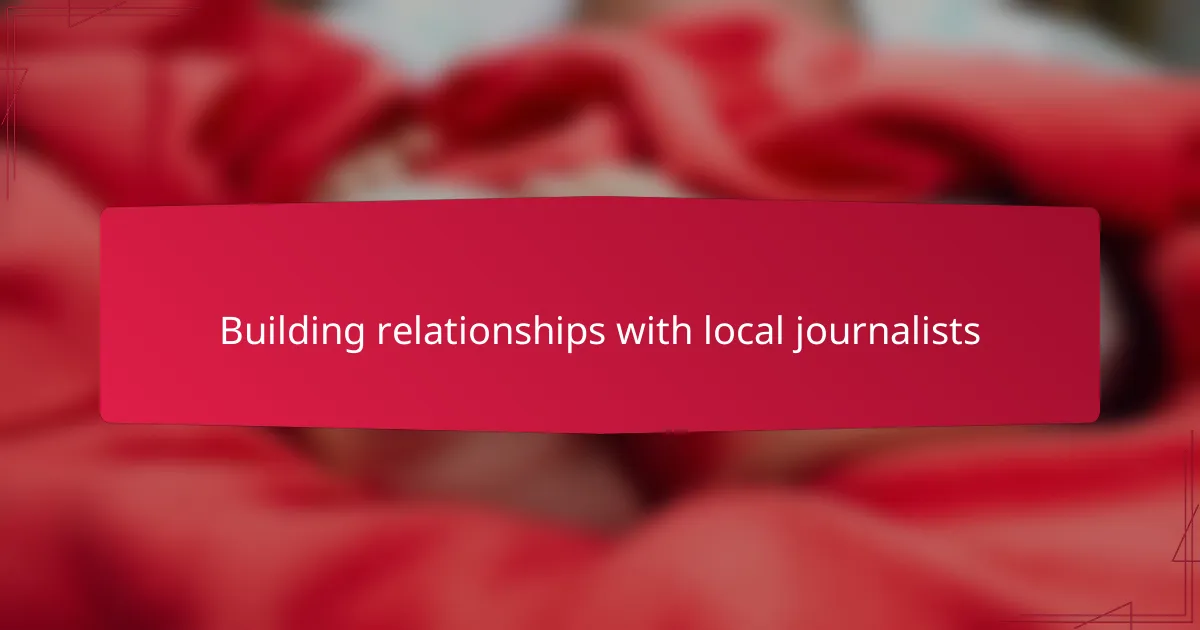
Building relationships with local journalists
Building relationships with local journalists has been a game-changer for my event promotions. I’ve learned that these connections are not just about sending press releases; it’s about genuine engagement and understanding their audience’s needs. By attending community events and offering exclusive stories, I noticed the media showed more enthusiasm in covering our fundraisers, which made me feel truly supported.
| Approach | Impact |
|---|---|
| Cold Emailing | Low response rate; feels impersonal |
| Building Relationships | Higher engagement; personalized coverage |
| Offering Exclusive Stories | Journalists more likely to feature the event |
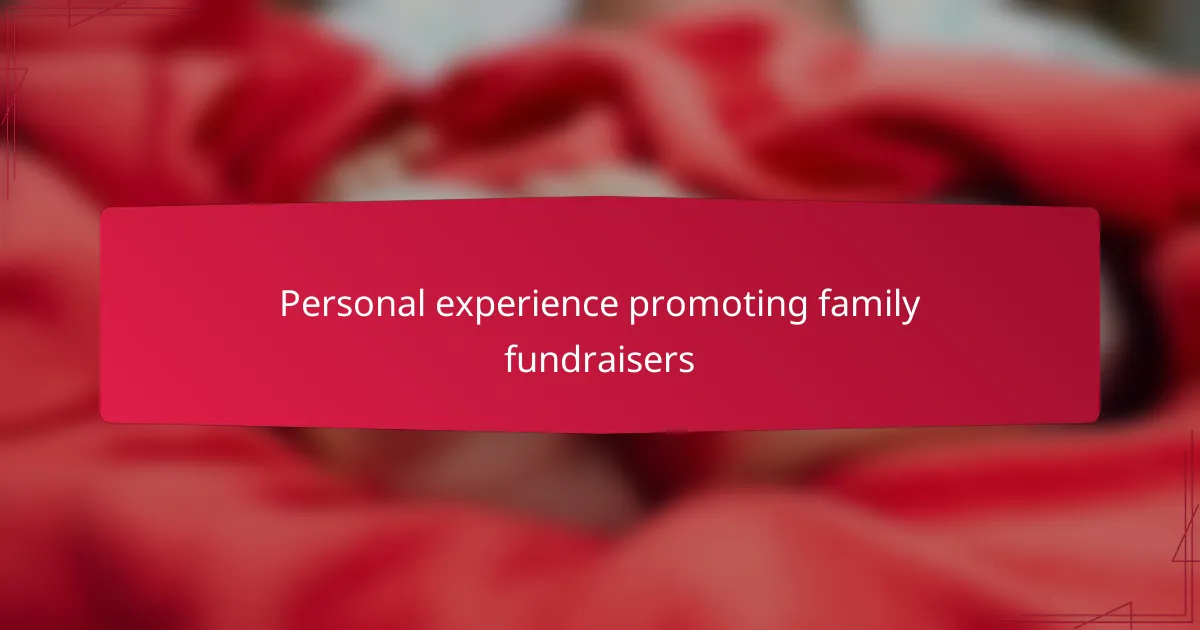
Personal experience promoting family fundraisers
I’ve found that tapping into local media outlets brings a genuine warmth to family fundraisers. When our neighborhood paper featured our event, the community engagement skyrocketed—it felt like a collective effort rather than just another fundraiser. The personal stories shared in those articles made the cause relatable and sparked real conversations among families.
Leveraging local radio was another eye-opener for me. Hearing my fundraiser details on air created an unexpected buzz that social media alone hadn’t achieved. It made me realize the power of authentic voices speaking to a familiar audience.
| Local Newspaper | Local Radio |
|---|---|
| Provides detailed coverage with personal stories | Offers immediate, engaging audio presence |
| Encourages in-depth community connection | Reaches listeners during daily routines |
| Slower response time but lasting impact | Quick, dynamic exposure with emotional appeal |

